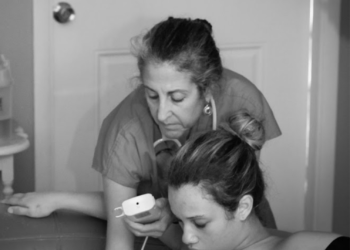What is Pelvic Floor Therapy?
The pelvic floor is a group of muscles and other tissues that form a sling-like hammock that supports the bladder, uterus, and rectum. Pelvic floor therapy treatments treat pelvic floor disorders. This Guide to pelvic floor therapy for pregnancy and birth will explore all the benefits. Pelvic Floor Therapy is a physical therapy that aims to restore the strength and function of the pelvic floor muscles. Therapy is recommended for women who have experienced childbirth or other trauma, such as a fall or car accident. Therapy can also be used to treat urinary incontinence, constipation, fecal incontinence, and chronic pain in the lower abdomen. The pelvic floor muscles are located in your pelvis and support your uterus, bladder, bowel, and rectum. They also help control urination and bowel movements.
What are the Benefits of Pelvic Floor Therapy?
The Pelvic Floor helps to control bowel movements and prevent leakage of urine or stool. The therapy treats pelvic floor disorders. Most pelvic exercises involve using fingers or hands to apply pressure to the pelvic area in order to increase muscle strength and control. Pelvic floor therapies are typically done by physicians who specialize in this type of treatment. Therapy Benefits: Treats urinary incontinence, and fecal incontinence.
A common misconception about Pelvic Floor Therapy is that it only helps with incontinence problems. In fact, it can help with many other conditions. The National Institute of Diabetes and Digestive and Kidney Diseases has awarded a grant to the University of North Florida’s Physiotherapy Department for an innovative new program that will help train underserved women in the community on how to perform pelvic floor exercises.
The Physiotherapy Training Program for Women with Type 2 Diabetes is a learning lab that will provide women with diabetes with the knowledge and skills to perform a variety of pelvic floor exercises and use them to manage their disease.
A lot of women experience pelvic pain, which can be difficult to understand because the pain is located in a different area than the cause. Pelvic Pain Syndrome is a disorder that affects approximately 30% of women in the United States. There are many causes of this pain, including childbirth, pelvic prolapse, ovarian cysts, and endometriosis.
How to Perform Pelvic Floor Exercises?
The pelvic floor muscles are like any other muscles in the body. They will get stronger with exercise. To perform pelvic floor exercises, you must contract your pelvic floor muscles for 10 seconds and then release them for 10 seconds.
You should repeat this process 10 times in a row, 3 times per day. You can also do this exercise while sitting on the toilet when you have a bowel movement or after urinating to help prevent urinary incontinence.
Pelvic Floor Therapy for Birth Preparation
The most popular pelvic floor therapy exercise is called “Kegel exercises”. The goal of these exercises is to strengthen the muscles until they can take on more tasks and offer more support during labor. During pregnancy, the pelvic floor helps to create a space for a growing fetus. When these muscles are weak, this space may be too small and allow for leakage of urine or bowel movement to occur. They can aid both men and women who are experiencing issues with urine leaks or bowel control.
A Kegel exercise is similar to pretending you need to pee and then holding your breath. You alternately relax and tense the muscles that govern urine flow. It is critical to target the correct muscles for tightening.
The next time you need to urinate, start and then stop. Feel your vaginal, bladder, or anus muscles tighten and move up. These are the muscles of the pelvic floor. If you feel them tighten, you’ve completed the exercise correctly. Pelvic floor physical therapy can prevent pelvic organ prolapse during and after pregnancy. The leakage may cause discomfort in certain parts of the lower abdomen that is related to the defect. Weak pelvic muscles also put a strain on other parts of the body such as the abdomen, lower back, and hips.
Midwife/ Doula Near Me
In conclusion, pelvic floor physical therapy is an important aspect of pregnancy. It can help to improve the quality of your birth experience and reduce the risk of developing urinary incontinence after delivery.
Pelvic floor physical therapy can help pregnant women who are experiencing pelvic girdle pain, bladder or bowel dysfunction, or who are at risk for developing these problems during pregnancy.
If you are in the South Florida area and are looking for a provider who takes the holistic approach, look no further. Founded by P. Fadwah Halaby CNM, Midwife360 is a holistic evidence-based practice for midwifery services such as routine women’s care, family planning, pregnancy care, and birthing. If you are ready to make an appointment visit the Midwife360 today.

















